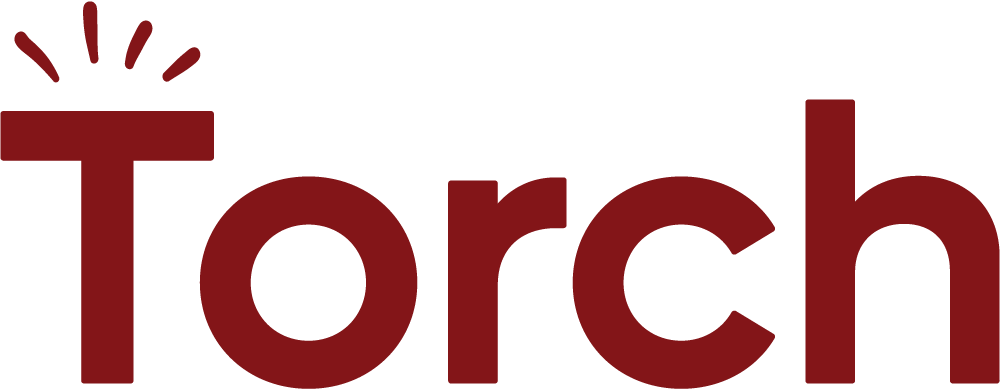Securing budget for leadership development isn’t just a challenge—it’s a test. Of strategy, of storytelling, and of whether your proposal really lands where it needs to: with your business.
That’s exactly what we explored in our recent fireside chat with Torch CFO Jeff Nichols and Klaviyo CPO Carmel Galvin. The two leaders have seen the leadership development conversation from every angle: HR champion, budget holder, business operator, and executive stakeholder. And they brought sharp clarity to what separates “nice-to-have” proposals from business-critical investments.
What followed was a masterclass in strategic storytelling—one that every HR leader, finance partner, and team owner should hear.
Missed the session? Check out the recording. Want a quick download? Here’s what we learned from this powerful (and candid) conversation.
Stop selling coaching. Start solving business problems.
What both Jeff and Carmel agreed on—loud and clear—is that leadership coaching doesn’t get buy-in when it’s pitched as an HR initiative. It lands when it solves a business problem. That shift in framing changes everything.
“The worst thing you can do is frame something as an HR initiative. It has to be solving a real business need and the business has to believe it’s going to solve their problem.” — Carmel Galvin
That means starting every coaching proposal with the ‘why now’—is this about missed delivery targets, under-ramped sales teams, or retention red flags in a critical function? Anchor in the problem, and the solution becomes a lot more compelling.
And Jeff didn’t hold back—pointing out that his finance team flags initiatives that feel disconnected from core outcomes.
“My spidey sense goes off when I hear about generalized HR wants. I want to see a real business problem and a clear connection to company goals.” — Jeff Nichols
For Jeff, the most convincing proposals:
- Focus on execution gaps, speed, or leadership bench strength
- Include metrics the business already tracks
- Target a specific population with a clear business impact
Find your champion—and make the case together.
Carmel shared about a time she tapped a leader in engineering to write about how a previous leadership program had helped him. His story got peers on board—and secured the budget.
As a leader who had experienced the value firsthand, this person was best suited to open the kickoff session as a peer champion.
“Even with the best program, you need to continually reinforce why it’s worth their time. Having someone from the business advocate for it makes a huge difference.” — Carmel Galvin
This is more than stakeholder management—it’s smart internal marketing. When leaders own the problem and champion the solution, your initiative moves from being a line item to being business-critical.
It cuts through resistance, boosts participation, and makes budget approval far more likely—because the value isn’t just coming from HR, it’s coming from the business itself.
Finance is your partner. Not your gatekeeper.
Finance doesn’t have to be the department of ‘no.’ This was a big takeaway from Jeff. Stop thinking of Finance as a hurdle. Think of them as your co-architect.
“Contrary to popular belief, HR and Finance are enablers. Our job is to help everyone else go bigger, better, faster, stronger. When leaders feel agency over what they invest in, they’re more committed to making it succeed.”— Jeff Nichols
To get there, don’t wait until budget season. Build the relationship early. Bring Finance into the conversation at the problem-definition stage—not the pitch deck stage. And when it comes to budgeting, consider shared ownership across departments.
Jeff’s approach:
- Start early: Engage finance partners well before budget season.
- Co-create the case: Collaborate with functional leaders to build compelling, data-driven proposals.
- Distribute ownership: When departments share budget responsibility, there’s greater commitment and resilience against cuts.
This creates a living bridge between leadership development and business strategy. And that’s the Torch difference. We help leaders grow in ways that move the whole organization forward.
If you want the budget, speak the language.
Coaching is often measured in sentiment. But budgets are won with metrics that move the business. “Use what’s already being tracked,” Jeff advised. “Show how coaching changes those numbers.”
“We have organizational health scorecards. Metrics like attrition, time to productivity, employee sentiment, and more. We built them with the business. So when I need to make the case for coaching, the connection is already there.”
— Carmel Galvin
This kind of scorecard-backed alignment doesn’t just make the business case clearer—it makes leadership development harder to cut when budgets tighten. The magic happens when you tie development work to outcomes your C-suite already cares about: revenue, retention, execution speed, team health.
As Jeff put it, it’s not enough to show how coaching avoids costs like turnover. You’ve got to show how it accelerates what the business actually cares about—things like:
- Faster revenue growth with better sales ramp times
- Smoother product launches by improving cross-team execution
- Stronger leadership presence that fuels customer trust and growth
- Faster innovation through better collaboration in R&D
And remember—different teams care about different outcomes. So tailor your story to fit their world:
- For sales: Talk about time to ramp, deal cycles, and quota attainment. If sales leaders are struggling, these numbers tell the story.
- For engineering: Connect leadership gaps to missed releases, slower delivery, or rising bug rates—things that put revenue at risk.
- For cross-functional teams: Focus on decision speed, team alignment, and project execution—especially when priorities shift fast.
- For executive teams: Bring it back to strategy execution, succession risks, and leadership bench strength to demonstrate how coaching prepares your organization for what’s next.
“I’ve seen it happen lots of times—you promote great engineers into manager roles, and without support, it’s fifty-fifty how that turns out. You start to see missed delivery schedules, slower release timeframes, higher bug rates. And while that might not show up directly on the P&L, it’s all downstream from there. If we can’t release fast enough, we miss revenue and we miss our goals.” — Jeff Nichols
When you frame coaching as a lever for outcomes your leaders already track, it stops being a nice-to-have—and starts looking like a competitive advantage.
Make every dollar count
During budget constraints (aka, always), both speakers urged leaders to think small and strategic. Carmel reminded us this is a time where coaching can actually shine—because a well-placed coaching program doesn’t just build leaders, it solves pressing business problems.
“I always look for the twofer. You get the coaching, but the real value is in solving the business problem at the same time. Like cereal with nutrients packed in.” — Carmel Galvin
Think small, strategic, and high-leverage. A focused cohort solving for a shared challenge can drive change that spreads across the org.
Carmel’s advice:
- Focus on what matters: Choose one or two high-leverage programs with the biggest business impact.
- Pair coaching with a business goal: Tie development to real, high-priority challenges.
- Start small, prove value: Run pilot programs with focused cohorts to build momentum and measurable results.
Jeff and Carmel have been through these conversations dozens of times. Here’s what they’d focus on if they were in your seat.
Five tactics Jeff and Carmel would try tomorrow
These weren’t just reflections—they were field-tested strategies. The kind of insights you can bring into your next stakeholder conversation, team meeting, or budget planning session.
- Start with the problem, not the program. If you lead with “we need coaching,” you’ve already lost. Talk about what’s broken—and how coaching helps fix it.
- Phone a friend. Don’t go it alone. Pull in a leader who’s feeling the pain and build the case together.
- Talk to Finance before the ask. Bring them into the thinking early, not just the final slide deck.
- Use metrics that already matter. Connect the dots to what the business (and your champion) already tracks.
- Make it their money too. Shared budgets = shared ownership. It’s harder to cut and easier to defend when it’s cross-functional.
Your questions, answered
How do you specifically link leadership development initiatives to business goals and metrics that executives really care about?
Carmel: “You have to back up your proposal with real measures. Is it going to help us move faster, build things more quickly, build revenue more quickly? You have to be able to connect the dots between those measures and the business outcomes.”
Any tips for showing measurable value?
Jeff: “Don’t create new metrics to try and explain the value of something. Stick with what you know. Stick with what people are already thinking about and doing.”
What if budgets are constrained?
Carmel: “They usually are. Figuring out the one or two, high bang for the buck programs that can really have an impact or is probably the smartest way to go.”
Centralized budget or distributed?
Jeff: “Both. Some parts belong as centralized, deployed by HR, and some should be sitting in functional budgets where people can control it and decide its value.”
Bring your leadership development vision to life
Coaching is no longer a luxury. It’s a lever. For growth, for execution, and for keeping the leaders you can’t afford to lose. Ready to make the case? Let’s talk.
Speaker spotlights
The ultimate guide to getting leadership coaching approved
Want a deeper dive into the strategies Jeff and Carmel shared? Our eBook gives you the data, language, and tactics to help your coaching proposal land with every key stakeholder—from Finance to functional leaders.



